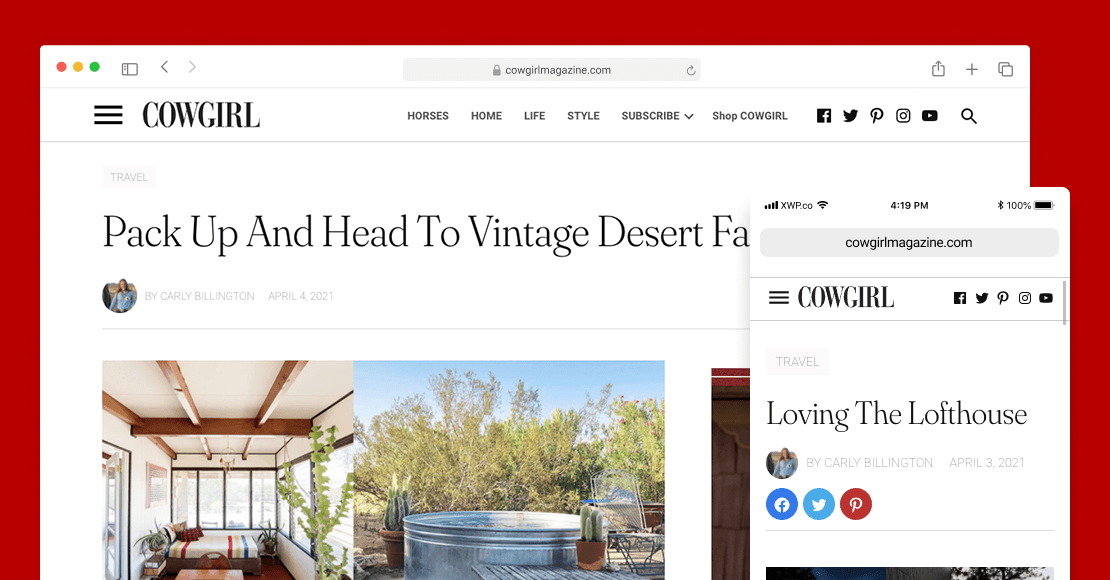How I leverage better digital transformation techniques
From Newsrooms
to Artificial Intelligence
My transition into technical and design roles (I’ve innovated with major studios, newsrooms, and creators across the web) came about with learning many lessons: When I began my career as a journalist in the “new media” era, I was met with the field radically reinventing itself. With the rise of the internet’s new-found reach, I quickly saw the power of technology in its ability to grow organizations, inform audiences, and simplify complexities: I leaned into these changes, and I’ve been growing non-stop.
15 years later I’m proud to say I’m a senior product professional, tackling challenges with these insights to solve media’s hardest problems.
Currently I am focused on ways to leverage AI’s transformative potential and how we can ethically harness cutting-edge tools to succeed in a fast-paced world, all while we navigate these new social norms, comply with data privacy law, and keep up with best practices surrounding usability and transparency.
THE WORLD OF MEDIA
FEELS LIKE IT’S
always changing
and it’s not optional to be ready for what’s next. Here’s a look at some of my common conversations I might have with organizations on how to navigate this:
Challenge 1:
Legacy Media usually equals tech debt
Legacy media organizations, in comparison to newer brands, often find themselves trapped in a cycle of outdated systems and delayed tech adoption. It loos like this from the outsdfe in: As a reader, you know the brand (it WAS! your fav!) but suddently This has far-reaching consequences:
- Tech Debt is a real struggle – Large legacy publishers often carry outdated platforms with clunky workflows, and a fear of straying from the familiar. This leaves them slow to react when a lean, tech-savvy upstart disrupts the space. Startups are nimble, and adaptable: They’re often excited to add a new line or “kill a darling” (even on good advice not to.) There is a middle ground though, and you can find it.
- Choosing Bad Revenue Opportunities over Keeping Brand Trust – Without modern approaches to ad tech, data analytics, and subscription models, legacy media might take in reader revenue and targeted advertising dollars, but not at the cost of your actual creator, audience and content.
- Poor User Experience (UX) – Awkward layouts on websites, slow load times, and interfaces designed for desktops in a mobile-first world frustrate audiences. This leads to higher bounce rates and lost readership. Recognizing the brands
- Opportunity or risk for the Future – The organizations unburdened by legacy systems and process often quickly seize on emerging technologies or platforms legacy media overlooks. Creators with massive followings often break out of traditional models and better engage with their actual audiences.
Challenge 2:
New upstarts better understand trends
The media landscape isn’t just about old giants anymore. Startups are shaking things up with agile approaches because they’re better aware of their niche audiences and better leverage their technology. This leaves legacy organizations scrambling to keep up. Here’s what we see in those who are struggling versus those who are thriving:
- Shrinking Reach versus Growing Formats – Younger audiences expect seamless digital experiences: They often do things we don’t expect, engaging in audio, text, and video in ways that bucks trends.
- The rise of podcasting and VR carries oppositional formats that require a culture shift to produce effectively – Media evolves often and Companies stuck in legacy process can’t effectively compete for attention on the platforms where these audiences live and wonder what, exactly, is TikTok used for.
- Brand Loyalty looks different today – Sometimes people follow the author, the content, the color, the brands inside the article… Not the publisher. Understanding your real audience segments, their behavior patterns, and how to serve them is different than ever before.
- Internal Inefficiencies abound – Outdated content management systems and workflows slow down news production, hindering the ability to break stories quickly and pivot with trends. Oftentimes there may be as many as 10 (or even 20) tabs needed to get a story across the line, as high as 100 clicks to publish a story.
It’s reasonable to feel overwhelmed, like you have to squeeze juice from a rock 🍊 just so you can make a profit.
Fortunately, There’s a better way!
Three Relevant Projects that highlight what it’s like to work with me
Case Study 1: Breaking Free
from Performance Bottlenecks
The Challenge: Cowgirl Magazine’s website was slow, outdated, and hampered by an unresponsive vendor. This limited their ability to compete, attract new audiences, and grow their business.
My Solution: I led a complete website transformation, focusing on speed, user-friendliness, and SEO optimization. This included overhauling navigation, updating copy, implementing industry-standard SEO practices, and empowering the Cowgirl team with new tools.
The Results: The website overhaul transformed Cowgirl’s online presence. They experienced massive page speed improvements, especially on mobile, boosting user engagement and satisfaction. The new tools and platform gave them greater flexibility and control, while improved SEO and enhanced UX led to significant gains in both desktop (29%) and mobile (67%) traffic.
READ THE
CASE STUDY
Reducing Tech Debt to grow a Publisher Site

Case Study 2: Building Partnerships
To make a Faster, More User-Centric Web
The Challenge: Website owners across industries struggled with slow websites, outdated technology, and a lack of performance optimization strategies.
My Solution: I spearheaded the development of a suite of performance products at my former agency. These scalable tools, combined with comprehensive training, empowered website owners to address speed issues, enhance user experience, and improve SEO.
The Results: Our work had far-reaching impact. Clients saw increased traffic, higher conversion rates, and stronger search rankings. My role in initiatives like AMP and Web Stories helped transform the web for media organizations globally.
READ THE
CASE STUDY
Building
products
to help
publishers

Case Study 3: Using AI for Business Growth
The Challenge: A leading F&B organization struggled with inefficient demand forecasting, leading to missed sales opportunities and product waste. Data was siloed and difficult to leverage for actionable insights.
My Solution: I designed and implemented a custom, AI-powered forecasting model that integrated data from various sources, including sales history, supply chain information, and marketing campaign data. Using tools like PowerBI, ChatGPT, Pinecone, and custom-built applications, this solution delivered real-time insights to multiple stakeholders.
The Results: The organization achieved significant improvements in forecasting accuracy, leading to optimized production, staffing, and inventory management. We saw a 15% increase in gross sales and a 45% reduction in product waste.
READ THE
CASE STUDY
Leveraging AI
for Big Data Processing

Download my Resume as a PDF » or visit my LinkedIn »
My Winning Approach
I measure and focus on three key areas when tackling changing ecosystems:
- Adaptability. The media landscape shifts constantly. I stay ahead of the curve, quickly understanding new tools and their applications.
- Creativity. I approach problems with an open mind, finding solutions that combine tech with human-centered storytelling.
- Data-Driven Results. Decisions are always backed by data, driving measurable improvements in traffic, subscriptions, and engagement.

My work with both established and emerging media entities gives me a unique perspective on staying competitive: I can help you navigate it all.
And whether it’s creator-focused newsletters (e.g. Substack), new formats like “Web Stories,” podcasting, or Tiktok—there’s a lot you can do if you understand what your audience needs.
This means looking at your key areas of growth, including:
- How to smash silos preventing business growth: Tech initiatives can’t be isolated from the creator: you’ve got to bring in the people who actually use the tools. You have to ensure collaboration is occuring—whatever the team shape. Be it between IT, editorial, executive, and product: Teams must be cooperative for a successful website, app, or ERP software build.
- How to actually aligned with your audience: No matter the company size, audience needs are paramount. I help organizations refocus away from protecting old structures and outdated concepts to creating truly user-centric experiences with clearer targets in mind. I love conducting user research, data analysis, competitor reseach, and persona workshops—and this has real impacts when done well.
- Embrace Experimentation and be better at Trendspotting: Set realistic goals for pilot projects and create space for test-and-learn approaches to find what truly works for your audience. Understanding what truly innovative startups are doing, and where those shifts create opportunities or threats for incumbents.

Are you an organization struggling to unlock your potential due to challenges with your technology?
I specialize in solving complex challenges, and want to work together to build sustainable innovation for you.

